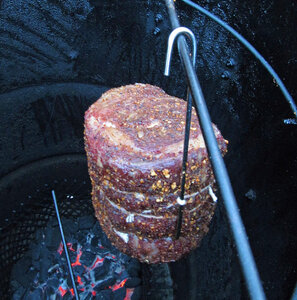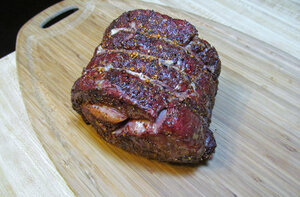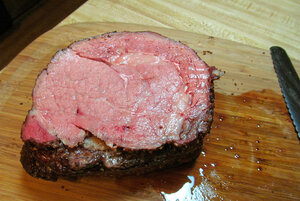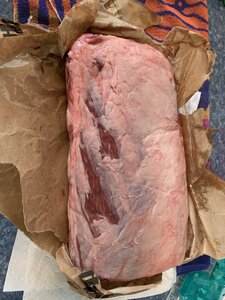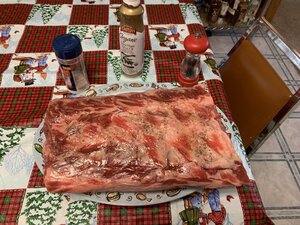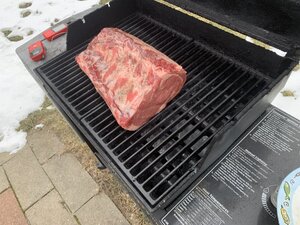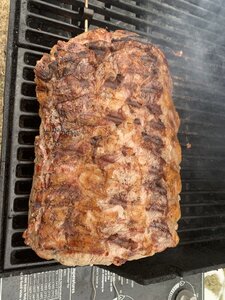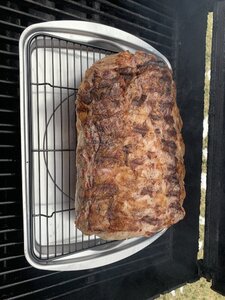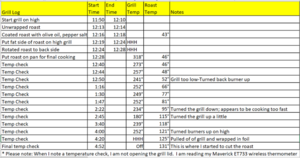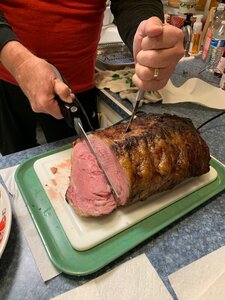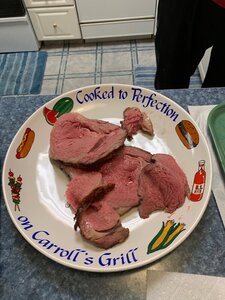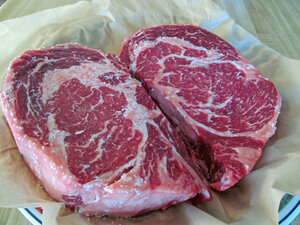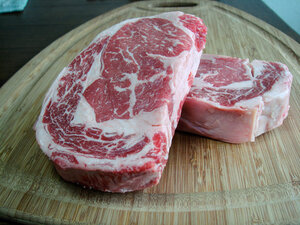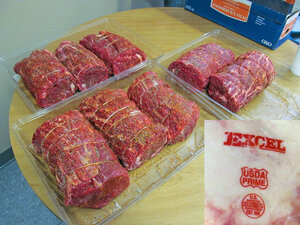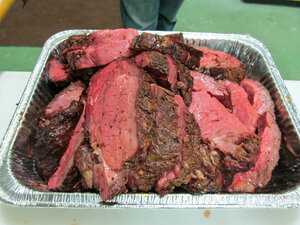- Sep 1, 2014
- 24
- 13
My grandson wanted prime rib so he brought over a 11lb roast for me to grill. My wife has cooked several of them in the oven and they came out very well but absolutely abhors messes in the oven (she cooks the roast uncovered at 500 degrees then turns the oven off and leaves the door closed for 15 minutes a pound). Even though they come out great, she didn't want to do this any longer. Last year, I grilled one on my Weber. It was a 7lb prime rib that had been in the freezer for at least two years. It wasn't the most flavorful roast in the world but it was edible. I grilled it at 250 degrees until internal temperature reached 135 degrees. I don't remember how long it took. Since my family likes prime rib that doesn't have a lot of seasoning on it , all I used was salt and pepper I think it was slightly overdone for our tastes (We all like medium rare) but it was edible. I want to make sure that I am doing it right this time so I am asking for your opinion.
The roast is 11 lbs. For medium rare, I want the roast to be about 125 degrees internally when I take it off. My plan is to coat it with a vegetable oil, salt, and pepper. My grill has three burner rods that run left and right across the grill. I tested the grill and with the back burner set at the lowest stetting, it runs about 250 degrees with the temperature probe in the middle of the grill. I am going to put the roast in a disposable tin foil pan. From the research online, it should be 15 minutes per pound or about 3 hours to grill the roast. I plan to cook it to 115 degrees and take it off and let it cook the rest of the way on its own. If I want more of a crust on the roast, do I turn the burner up higher at 105 degrees until 115 degrees to give it up a crust? What is some of your thoughts? Thanks
The roast is 11 lbs. For medium rare, I want the roast to be about 125 degrees internally when I take it off. My plan is to coat it with a vegetable oil, salt, and pepper. My grill has three burner rods that run left and right across the grill. I tested the grill and with the back burner set at the lowest stetting, it runs about 250 degrees with the temperature probe in the middle of the grill. I am going to put the roast in a disposable tin foil pan. From the research online, it should be 15 minutes per pound or about 3 hours to grill the roast. I plan to cook it to 115 degrees and take it off and let it cook the rest of the way on its own. If I want more of a crust on the roast, do I turn the burner up higher at 105 degrees until 115 degrees to give it up a crust? What is some of your thoughts? Thanks


